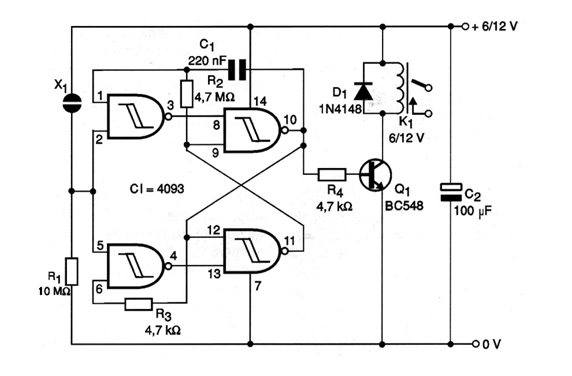A tap on sensor X1 of the circuit shown in the figure causes the flip-flop formed by the 4 NAND ports to switch on the relay which can then control an external load. A new touch on the sensor causes a new status change to occur by turning the relay off. The interesting thing about bistable action is the use of a single sensor. The sensitivity depends on the R1 resistor which can have reduced values if there is a tendency for erratic triggering. The capacitor C1 that determines the readiness of the switching action and also the sensitivity to any peaks that can cause the operation can be changed. The controlled load depends on the relay used as well as the power supply.




